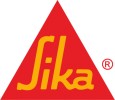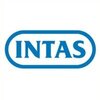Technician
600+ Technician Interview Questions and Answers

Asked in Beekay Steel Industries

Q. How much i know about rolling in hot steel rolling mill
I have a good understanding of rolling in hot steel rolling mills.
I am familiar with the process of hot steel rolling, which involves passing heated steel through a series of rollers to shape it.
I have knowledge of the different types of rolling mills used in the industry, such as blooming mills, plate mills, and strip mills.
I understand the importance of temperature control and lubrication in the rolling process to ensure the quality of the final product.
I am aware of the sa...read more

Asked in Cushman & Wakefield

Q. What is a water-cooled chiller?
A water cold chiller is a device that cools water by removing heat from it, typically used in air conditioning systems or industrial processes.
A water cold chiller uses a refrigeration cycle to cool water.
It consists of components such as a compressor, condenser, expansion valve, and evaporator.
The chiller circulates chilled water through a system to remove heat from the surroundings.
It is commonly used in air conditioning systems for cooling buildings or in industrial proces...read more

Asked in Cushman & Wakefield

Q. What is pac, who to works?
PAC stands for Programmable Automation Controller. It is a device used in industrial automation to control and monitor processes.
PAC is a type of controller used in industrial automation systems.
It is programmable and can be customized to control and monitor various processes.
PACs are often used in manufacturing plants, power plants, and other industrial settings.
They can communicate with other devices and systems to gather data and make decisions.
PACs offer advanced features...read more

Asked in Axtria

Q. What is your area of interest?
My area of interest is electrical engineering and troubleshooting.
Electrical engineering
Troubleshooting
Circuit design
Equipment maintenance
Power systems

Asked in Randstad

Q. Why are new generation vehicles mandatory at this time?
New generation vehicles are mandatory due to environmental concerns, technological advancements, and changing consumer preferences.
Environmental concerns: New generation vehicles are more fuel efficient and produce lower emissions, helping to reduce pollution and combat climate change.
Technological advancements: New vehicles come equipped with advanced safety features, connectivity options, and autonomous driving capabilities.
Changing consumer preferences: Consumers are incre...read more

Asked in Mazars

Q. What are the different methods of calculating reserves?
Different methods of calculating reserves include deterministic methods, probabilistic methods, and simulation models.
Deterministic methods involve using fixed values for input parameters to calculate reserves.
Probabilistic methods incorporate uncertainty by assigning probability distributions to input parameters.
Simulation models simulate multiple scenarios to estimate reserves based on different input assumptions.
Technician Jobs




Asked in Flex

Q. What is the difference between a CRO and a function generator?
A CRO (Cathode Ray Oscilloscope) is used to display and analyze waveforms, while a function generator is used to generate different types of waveforms.
CRO is used for visualizing electrical signals in the time domain, while a function generator is used to create specific waveforms like sine, square, triangle, etc.
CRO provides a visual representation of the input signal's amplitude, frequency, and phase, while a function generator allows users to control the frequency, amplitu...read more

Asked in Tata Motors

Q. What is the process for checking a vehicle starting problem?
To check a vehicle starting problem, follow these steps.
Check the battery for charge and corrosion
Inspect the starter motor and solenoid
Examine the ignition switch and wiring
Test the fuel pump and filter
Check for any error codes using a diagnostic tool
Share interview questions and help millions of jobseekers 🌟


Asked in Sika

Q. What raw materials are used to make paint?
Raw materials for paint include pigments, binders, solvents, and additives.
Pigments: Provide color and opacity to the paint (e.g. titanium dioxide, iron oxide)
Binders: Holds the pigment particles together and adhere them to the surface (e.g. acrylic, alkyd)
Solvents: Help in the application and drying of the paint (e.g. water, mineral spirits)
Additives: Enhance properties like durability, flow, and drying time (e.g. anti-foaming agents, UV stabilizers)

Asked in Tata Steel

Q. How is 1 horsepower (hp) defined in relation to kilowatt-hours (kWh)?
1 horsepower is equivalent to 0.7457 kilowatt-hours (kWh).
1 horsepower is equal to 0.7457 kilowatts.
To convert horsepower to kilowatt-hours, you need to multiply by 0.7457.
For example, if a machine has a power rating of 100 horsepower, it would be equivalent to 74.57 kilowatt-hours.

Asked in HP India

Q. What difficulties did you encounter while learning C?
I encountered difficulties in learning C due to its complex syntax and memory management.
Understanding pointers and memory allocation
Dealing with segmentation faults and memory leaks
Mastering the syntax and usage of C libraries
Debugging and troubleshooting C programs

Asked in Stallion Group

Q. What is the process of quality control testing for point of sale machines?
Quality control testing for point of sale machines involves rigorous testing to ensure functionality and accuracy.
Testing hardware components such as card readers, touch screens, and printers for proper functionality
Testing software for accuracy in processing transactions and generating receipts
Performing stress tests to ensure the machine can handle high volumes of transactions
Conducting security tests to prevent hacking or data breaches
Regular maintenance checks to ensure c...read more

Asked in KONE

Q. Can you walk me through the steps you take to ensure safety protocols are followed on a job site?
I ensure safety protocols by implementing a comprehensive plan and training workers on safety measures.
Develop a safety plan specific to the job site
Train workers on safety procedures and provide necessary safety equipment
Conduct regular safety inspections and address any hazards immediately
Ensure compliance with all relevant safety regulations and standards
Encourage workers to report any safety concerns or incidents
Hold regular safety meetings to discuss any updates or chang...read more

Asked in Coffee Day

Q. What is a PCB in a machine?
A PCB in a machine is called a printed circuit board.
A PCB is a flat board made of non-conductive material with conductive pathways etched or printed onto it.
It provides mechanical support and electrical connections for electronic components.
PCBs are commonly used in machines and devices to facilitate the flow of electricity and control the functions of the machine.
Examples of machines that use PCBs include computers, smartphones, televisions, and industrial equipment.

Asked in Suzlon Group

Q. What is involved in maintenance procedures?
Maintenance includes regular checks, repairs, and replacements to ensure equipment and facilities are functioning properly.
Regular inspections and cleaning
Replacing worn or damaged parts
Repairing broken equipment
Updating software and firmware
Testing and calibration
Ensuring compliance with safety regulations
Maintaining accurate records
Training staff on proper use and maintenance

Asked in Hindusthan National Glass

Q. How to changeover pumps in case of emergency time . How to handle furnace operation.
To changeover pumps in case of emergency, follow proper shutdown procedures, switch to backup pump, and restart system. For furnace operation, ensure proper ventilation, monitor temperature, and follow safety protocols.
Follow proper shutdown procedures for the affected pump to prevent damage.
Switch to the backup pump to maintain continuous operation.
Restart the system and monitor for any abnormalities or issues.
For furnace operation, ensure proper ventilation to prevent carbo...read more

Asked in Jubilant Ingrevia

Q. What is a transformer, what is diode, what is transistor etc
A transformer is a device that transfers electrical energy from one circuit to another through electromagnetic induction. A diode is a semiconductor device that allows current to flow in only one direction. A transistor is a semiconductor device used to amplify or switch electronic signals and power.
Transformers are used in power transmission and distribution systems to step up or step down voltage levels.
Diodes are commonly used in rectifier circuits to convert AC to DC.
Tran...read more

Asked in Tempsens Instruments (I)

Q. What is the difference between series and parallel wiring in house electrical systems?
Series wiring connects devices in a single path, while parallel wiring connects devices across multiple paths.
In series wiring, current flows through each device sequentially; if one device fails, the entire circuit is interrupted.
Example: Christmas lights often use series wiring; if one bulb goes out, the whole string may stop working.
In parallel wiring, each device has its own path to the power source; if one device fails, others continue to operate.
Example: Household outle...read more
Asked in Thermal Dynamics

Q. Can you describe this basic wiring diagram. Is it in series? Parallel? How many volts? Where is the thermostat?
The wiring diagram is in parallel, with a voltage of X volts. The thermostat is located at Y position.
The wiring diagram is in parallel, meaning that the components are connected in separate branches.
The voltage of the diagram is X volts, which is the potential difference across the components.
The thermostat is located at Y position, which controls the temperature in the system.

Asked in Tata Steel

Q. What is the unit of resistance?
The unit of resistance is ohm (Ω).
Resistance is the opposition to the flow of electric current.
Ohm is named after Georg Simon Ohm, a German physicist.
The symbol for ohm is the Greek letter omega (Ω).

Asked in AkzoNobel

Q. How much area does one liter of cement-based primer cover?
One liter of cement-based primer typically covers around 8 to 10 square meters of surface area.
One liter of cement-based primer covers approximately 8 to 10 square meters
Coverage may vary depending on the porosity and texture of the surface
It is recommended to refer to the manufacturer's instructions for specific coverage rates

Asked in Tempsens Instruments (I)

Q. What is the difference between AC (Alternating Current) and DC (Direct Current) supply?
AC alternates direction periodically, while DC flows in a constant direction. Both have distinct applications and characteristics.
AC (Alternating Current) changes direction periodically, e.g., household electricity.
DC (Direct Current) flows in one direction, e.g., batteries.
AC is used for power distribution over long distances due to lower energy loss.
DC is commonly used in electronic devices and circuits.
AC voltage can be transformed to different levels using transformers.
DC...read more

Asked in JBM Group

Q. What happens there is what happens at the affectionate and the quality is being kept in mind
The question is unclear and does not make sense.
Asked in Carver Aviation

Q. Do you have any maintenance experience on Cessna 172-R and C172-S aircraft?
Yes, I have maintenance experience on both Cessna 172-R and C172-S aircraft.
Performed routine inspections and maintenance tasks on Cessna 172-R and C172-S aircraft
Troubleshooted and repaired mechanical and avionics issues on both models
Followed manufacturer's guidelines and maintenance manuals for servicing and repairs

Asked in Cushman & Wakefield

Q. What is hvac, ups, ahu?
HVAC stands for Heating, Ventilation, and Air Conditioning. UPS stands for Uninterruptible Power Supply. AHU stands for Air Handling Unit.
HVAC refers to the technology used for indoor environmental comfort, including heating, cooling, and air quality control.
UPS is a device that provides emergency power to a load when the input power source fails.
AHU is a device used to regulate and circulate air as part of a heating, ventilation, and air conditioning system.
Asked in Zeelog Logistics

Q. What is the rated voltage of single-phase current and three-phase current?
The rated voltage of single phase current is typically 120-240 volts while three phase current is typically 208-480 volts.
Single phase current is commonly used in residential settings while three phase current is used in industrial settings.
The rated voltage can vary depending on the specific application and location.
In some countries, the rated voltage for single phase current may be different than in others.
The voltage rating is important to ensure proper operation and safe...read more

Asked in Larsen & Toubro Limited

Q. What happens if you change the capacitor wire of a fan?
Changing the capacitor wire of a fan can lead to malfunctioning of the fan or even damage to the fan motor.
Incorrect wiring can cause the fan to not work properly or not work at all.
Mismatched capacitor wire can damage the fan motor.
It is important to follow the correct wiring diagram when replacing capacitor wires.
Asked in SVM KIA

Q. What do you know about automobiles?
Automobiles are vehicles designed for transportation, typically powered by internal combustion engines.
Automobiles are commonly used for personal transportation.
They come in various types such as cars, trucks, and motorcycles.
They are powered by internal combustion engines that burn fuel to generate power.
Automobiles have various components like engines, transmissions, brakes, and suspension systems.
Regular maintenance and servicing are necessary to keep automobiles in good w...read more

Asked in Intas Pharmaceuticals

Q. What is the definition of Area SOP?
Area SOP refers to Standard Operating Procedures specific to a designated area, ensuring consistent and efficient operations.
Defines protocols for tasks within a specific area.
Ensures compliance with safety and quality standards.
Facilitates training and onboarding of new staff.
Example: A manufacturing plant may have an Area SOP for assembly line operations.
Helps in maintaining consistency in processes and outcomes.
Asked in DB RRTS Operations

Q. What is the working principle of an On-Load Tap Changer (OLTC)?
An On-Load Tap Changer (OLTC) adjusts transformer voltage levels while in operation, ensuring stable power supply and efficiency.
Voltage Regulation: OLTC maintains the output voltage of transformers by adjusting the tap settings based on load conditions.
Under-Load Operation: Unlike traditional tap changers, OLTC can change taps without interrupting the power supply, which is crucial for continuous operation.
Mechanical Mechanism: OLTC uses a mechanical system with contacts tha...read more
Interview Questions of Similar Designations
Interview Experiences of Popular Companies





Top Interview Questions for Technician Related Skills



Reviews
Interviews
Salaries
Users

















